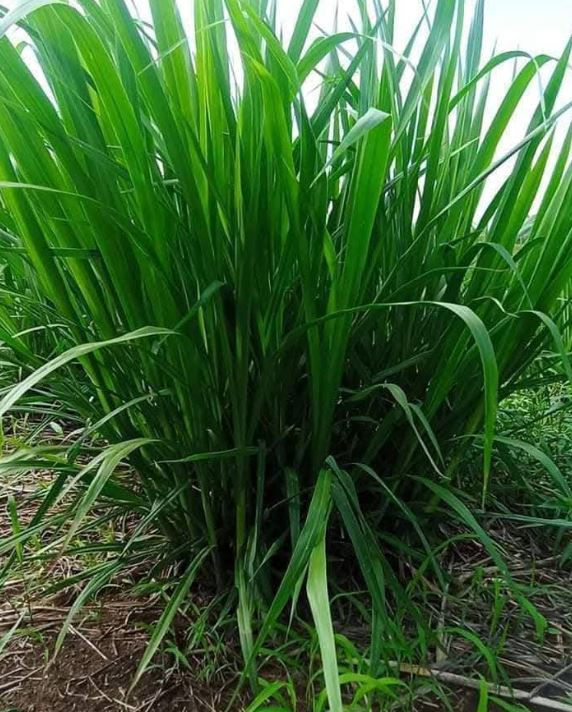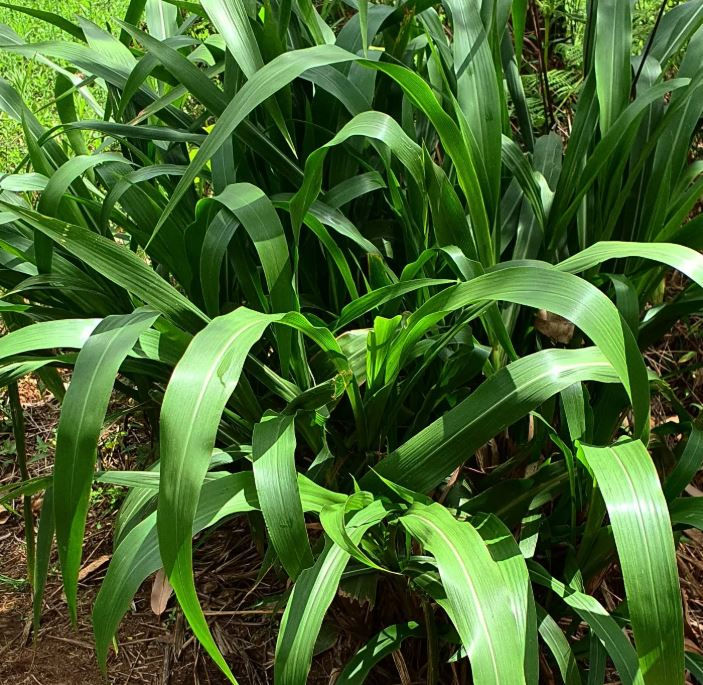Napier Grass Farming in Kenya (2025 Guide): Super Napier, Pakchong, Yield, Price & Where to Buy Seeds
- BeyondForest

- 1 day ago
- 6 min read

Image of Australian Red Napier F1 by Maximum Milk Production Solution Africa
0.)About Napier Grass
1.)Super Napier Grass Price Per Kg in Kenya
2.)All Napier Grass Varieties in Kenya (2025 Update)
3.)Napier Grass Yield Per Acre (All Varieties Compared)
6.)Napier Grass Growth Timeline
8.)Disadvantages of Super Napier Grass
Mix Napier with Desmodium or Super K Vines for a high-protein fodder system that boosts milk yield and lowers feed costs.

Close-up of Super Napier Pakchong
Napier grass, also known as Elephant Grass, is one of the most important fodder crops used by livestock farmers across Kenya and East Africa. It is a fast-growing, high-yielding perennial grass that thrives in tropical and subtropical climates, making it ideal for dairy and beef farming. Napier grass is primarily cultivated for its ability to produce large amounts of highly digestible biomass rich in energy, fiber, and protein—crucial for boosting milk production and animal growth.
Farmers prefer Napier because it can be harvested multiple times a year, is easy to propagate through cuttings, and performs well even on small parcels of land.
Image of Australian Red Napier
Modern improved varieties such as Super Napier (Pakchong 1), Australian Red Napier, Juncao, and Indonesian Smart Napier have transformed fodder production due to their higher crude protein levels, faster regrowth, and better drought tolerance compared to traditional Napier.
Want To Learn More About Silage Prices Click Here >>>
Image of Guatemala Grass
Image of Super Napier Pakchong cuttings
Variety | Price Per Cutting |
Super Napier (Pakchong 1) | 7Ksh per cutting |
Australian Red Purple Napier | 40Ksh per cutting (bulk prices lower) |
Juncao Napier Grass | 20Ksh per cutting |
Indonesian Smart Napier | 10Ksh–20Ksh per split |
Guatemala Grass | 20Ksh per split |
Super K Vines | 20Ksh |
Desmodium Splits | 10Ksh per split |
Brachiaria Grass Splits | 10Ksh per split |
Super Napier Pakchong 1 (Thailand) – “King of Napier”
Protein: 16%–18% |
Yield: 180–200 tons per acre per year |
Feeds 15 dairy cows per acre |
First harvest: 75–90 days |
Subsequent cuts: 45–60 days |
Best for silage |
Protein: 18.26% – 25% |
Height: 11 ft |
Yield: 50–55 tons per harvest |
Harvest frequency: 7–8 times per year |
Drought tolerant |
Best for cattle, sheep, goats, pigs, rabbits |
Image of Indonesian Smart Napier with roots are laid in a red container.
Protein: 20%–25% |
First harvest: 80–90 days |
Subsequent harvests: 45–60 days |
Yield: 60–70 tons per harvest |
Smooth dark-green leaves |
Best for goats, sheep, poultry, pigs |
Juncao Napier Grass (Chinese Magic Grass)
Crude Protein of up to 18% |
Fast growing |
Disease resistant |
Produces slightly more than 200 tons per acre per year. |
Suitable for Silage Making |

Protein: 22%–30% |
Harvest: 90 days |
Very vegetative, palatable |
No tubers |
High milk production |
Image of Guatemala Grass
Highly palatable |
High dry matter yield |
Great for dairy cows |
Brachiaria Grass (Mulato II)
Image of Lush green Bracharia grass growing densely
Best for grazing |
Soil-improving |
High protein for beef & dairy |
Desmodium (Ideal Fodder Legume)

Adds nitrogen to soil |
High protein |
Excellent for dairy farming |
Variety | Yield |
Super Napier Pakchong | 180–200 tons/year |
Australian Red Napier | 50–55 tons/harvest |
Indonesian Smart Napier | 60–70 tons/harvest |
Juncao | High vegetative yield |
Guatemala Grass | Medium-high |
Brachiaria | Moderate |
Where to Buy Napier Grass Seeds in Kenya
MMPS Africa | Thika | 0717 782 930 |
Larry’s Fodder Farm | Kericho County | 0721 982 950 |
DairyVerse Kenya | Online Fodder Shop | 0722 228 190 |
How to Plant Pakchong Napier Grass (Step-by-Step)

Image of Purple napier aka Australian Red Napier by Waichanguru Muhoya
1. Choose the Right Variety
Select high-yield varieties such as Super Napier (Pakchong 1), Australian Red Napier, Juncao, or Smart Napier.
Choose varieties suitable for your climate and livestock needs.
2. Prepare the Land Properly
Plough the land deeply to loosen the soil.
Remove weeds, stones, and debris.
Add well-decomposed manure (1–2 buckets per hole or per metre).
Make ridges or rows depending on your spacing.
3. Prepare Planting Materials
Use healthy cuttings with 2–3 nodes each.
Avoid old, weak, or diseased stems.
Keep planting material moist to avoid drying.
4. Correct Spacing Is Key
Super Napier / Pakchong 1: 3 ft × 3 ft spacing.
Australian Red Napier: 2.5 ft × 2.5 ft.
Dwarf/Smart Napier: 2 ft × 2 ft.
Wide spacing improves air circulation and increases yield per plant.
5. Plant the Cuttings Properly
Dig holes 15–20 cm deep.
Place the cutting at an angle or vertically with at least one node buried.
Cover lightly with soil and press firmly.
Apply manure or DAP for strong root development.
6. Watering Requirements
Water immediately after planting.
In dry areas, irrigate twice a week during establishment.
Maintain consistent moisture for the first 4–6 weeks.
7. Weeding & Early Management
Weed at least twice before the first harvest.
Mulch to reduce evaporation and suppress weeds.
Apply additional manure every 2–3 months.
8. Fertilizer & Manure Application
Apply farmyard manure or compost regularly.
Add CAN or urea after every harvest to boost regrowth.
Napier responds well to nitrogen.
9. Pest & Disease Control
Watch for Napier head smut in traditional varieties.
Improved varieties like Super Napier and Juncao are more resistant.
Remove and burn infected plants if necessary.
10. Harvesting Timeline
First harvest: 75–90 days after planting (depending on variety).
Subsequent harvests: every 45–60 days.
Cut at 3–4 feet height for maximum protein and palatability.
Napier grass grows rapidly once established, making it one of the most reliable fodder crops for Kenyan farmers. After planting, the grass takes about 75–90 days to reach its first harvest, depending on the variety and rainfall or irrigation levels. Improved varieties such as Super Napier Pakchong, Juncao, and Australian Red Napier often mature faster due to better genetics. After the first cut, Napier regrows quickly and can be harvested every 45–60 days throughout the year. Under good management—adequate manure, watering, and timely weeding—Napier grass can achieve 6–8 harvests annually, ensuring consistent fodder production.
Feeding capacity also depends on manure application, watering, spacing, and cutting intervals.
One acre of well-managed Napier grass can feed between 10–15 dairy cows, depending on the variety planted and the quality of management. High-yield varieties like Super Napier Pakchong and Juncao can produce up to 180–200 tons of fodder per acre per year, enough to sustain up to 15 cows when harvested regularly. Traditional Napier varieties typically support 6–8 cows due to lower protein and biomass yield.
High Water Demand: Requires consistent moisture during establishment for strong rooting and rapid growth.
Nutrient Intensive: Needs regular manure or nitrogen fertilizer to maintain high protein and biomass yield.
Labour Intensive Harvesting: Grows very tall and thick, making cutting and transporting more labour-demanding.
Hi, I’m Evans. Need Data Research or Analysis?
I help businesses gather the right data and turn it into actionable insights.
Becomes Fibrous if Overgrown: If not harvested every 45–60 days, stems harden and reduce palatability.
Transport Costs for Cuttings: Planting material is bulky, making delivery expensive for farmers far from suppliers.
Risk of Poor Establishment in Dry Areas: Without irrigation or rainfall, initial growth can be slow.
Requires Wide Spacing: Needs 3 ft × 3 ft spacing, meaning more land preparation work.
What is the best Napier grass variety for dairy cows?
The best high-yield varieties are Super Napier Pakchong 1, Australian Red Napier, Juncao, and Indonesian Smart Napier. They have higher protein content (16%–25%) and regrow faster than traditional Napier.
How long does Napier grass take to grow?
Napier grass takes 75–90 days for the first harvest. After establishment, it can be harvested every 45–60 days throughout the year.
How many cows can one acre of Napier grass feed?
One acre of Super Napier can feed up to 15 dairy cows per year due to its high biomass yield. Traditional Napier usually feeds 6–8 cows per acre.
The recommended spacing is 3 ft × 3 ft to allow proper tillering, air circulation, and maximum yields.
Is Super Napier grass better than ordinary Napier?
Yes. Super Napier offers higher protein (16–18%), faster regrowth, bigger stems, higher biomass, and greater milk-boosting properties.
How often should Napier grass be harvested?
Harvest every 45–60 days. Leaving it too long makes it fibrous and less nutritious.
Does Napier grass require fertilizer?
Yes. Napier responds very well to manure and nitrogen. Apply organic manure during planting and CAN/Urea after each harvest.
Where can I buy Napier grass seeds or cuttings in Kenya?
You can buy from MMPS Africa, Larry’s Fodder Farm (Kericho), DairyVerse Kenya, FMK Marketplace, and verified county-based sellers.
Can Napier grass grow in dry areas?
Napier can survive in semi-arid zones but improved varieties perform better with irrigation or regular rainfall, especially during establishment.
What are the disadvantages of Super Napier grass?
It requires more water, more manure, wide spacing, regular cutting, and labour for harvesting. It can also become fibrous if not cut on time.



















Comments